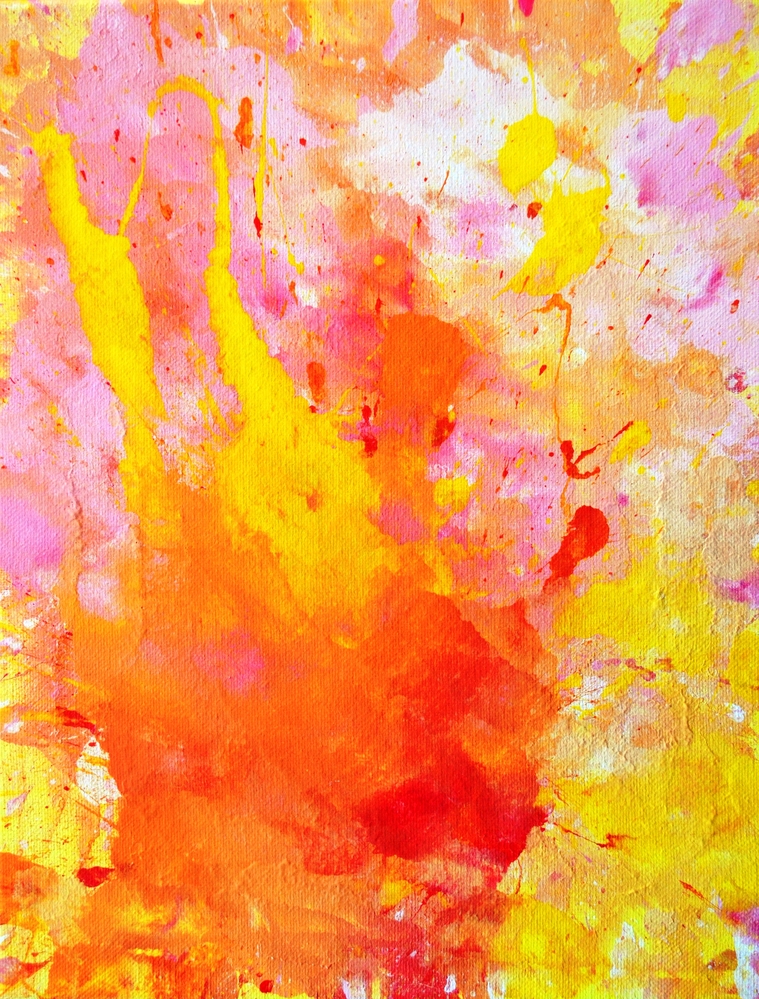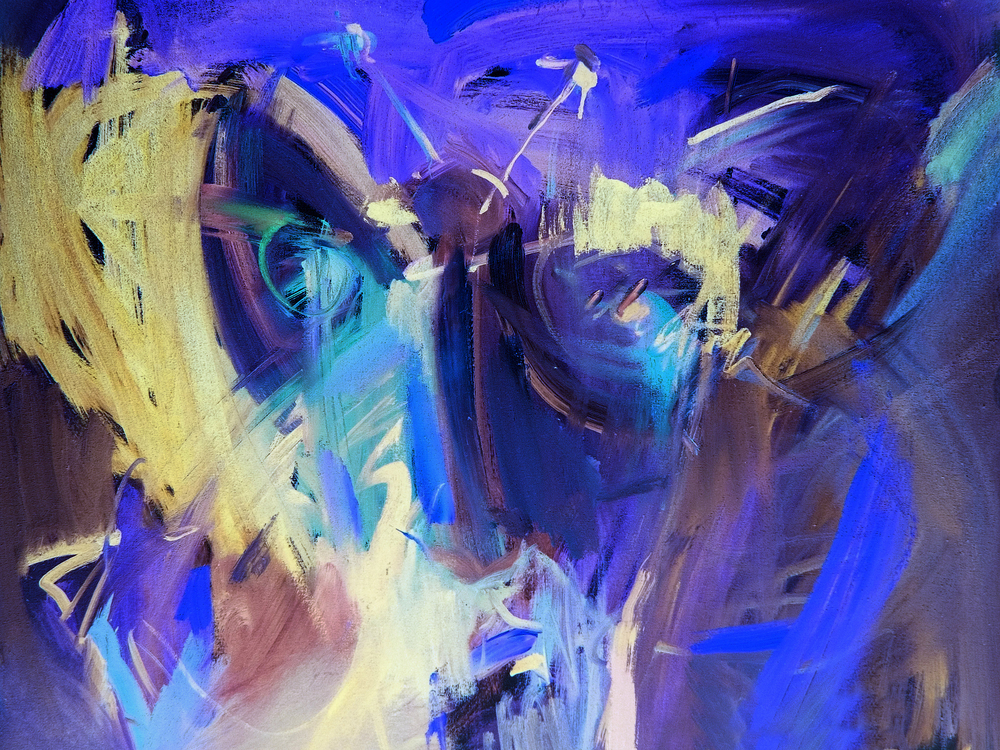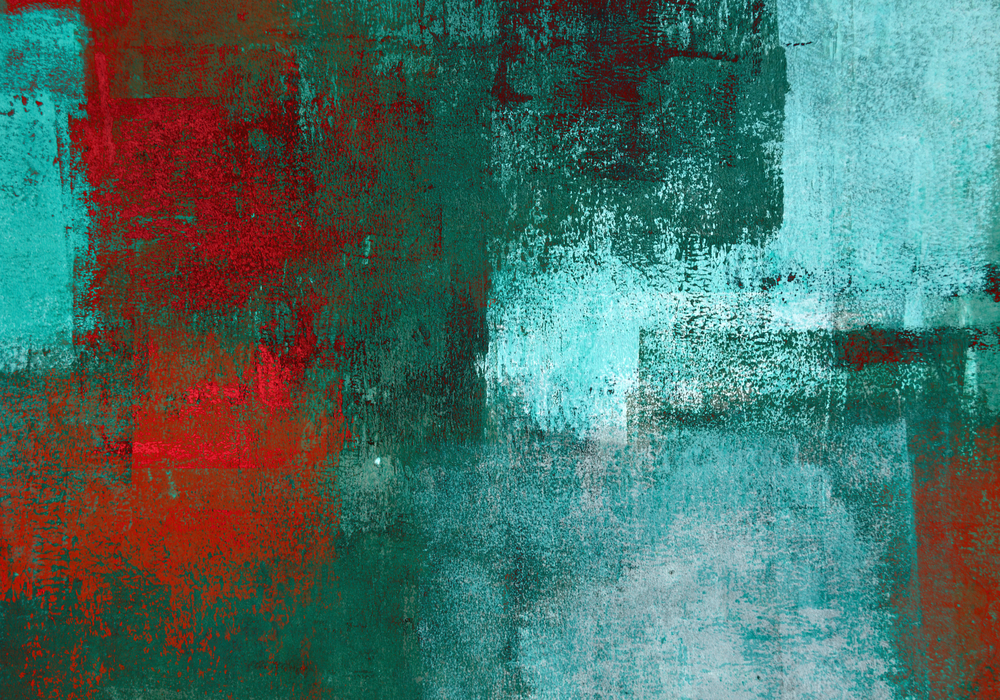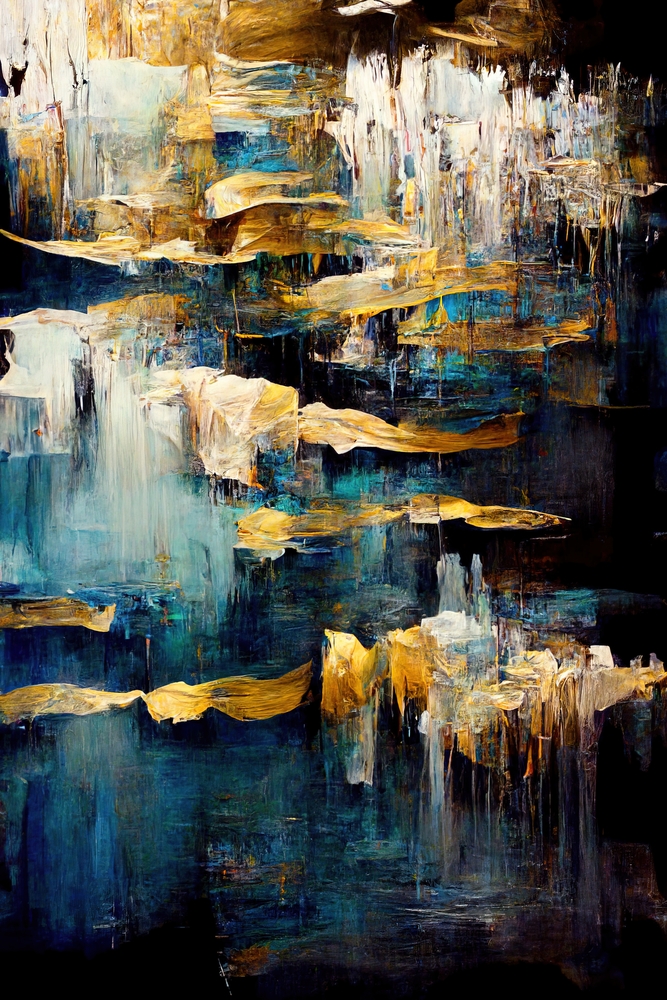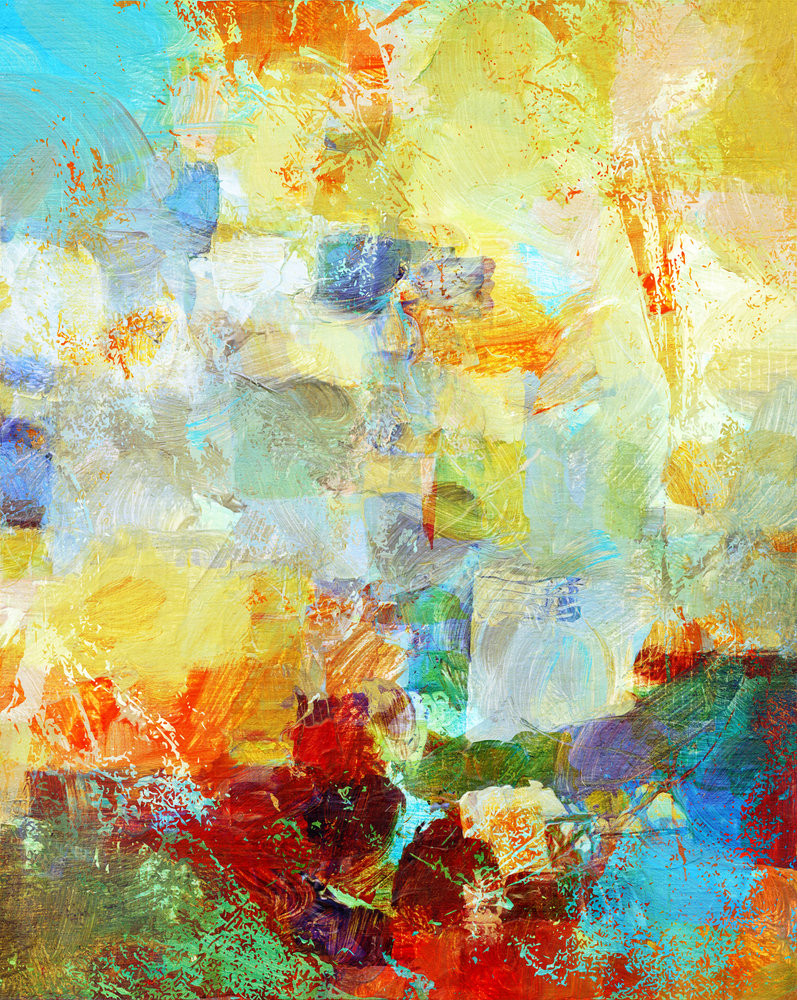Sometimes in life, there are things which are better left ambiguous. Abstract art is one of those things. From Kandinsky’s Expressionism to Pollock’s action painting, abstract art is the consummate 20th century style—an irreplaceable component of modern art.
A designer favourite, infinitely evolving and more subjective than most—abstract art rocks the interior design world. Here are seven trending abstract art styles you should know.
1. Geometric abstraction
Iconic artists: Wassily Kandinsky, Kazimir Malevich, Piet Mondrian
As the name implies, geometric abstraction (also logical or intellectual abstraction) is based on the use of geometric shapes, planes, and straight and broken lines combined into non-objective compositions. It largely owes its appearance to Cubism. Inspired by Cézanne’s works and fascinated by the search for a “new reality”, Cubists were the first to experiment with the decomposition of all objects and shapes into geometric figures. Wassily Kandinsky, the founder of non-objective painting, was one of the first to use this approach in his abstract works. Kazimir Malevich (suprematism) and Piet Mondrian (neoplasticism) also actively developed it. In particular, the latter used vertical and horizontal lines to create harmony and rhythm.
Geometric abstractionism was very popular up to the end of World War II and had a significant impact on modern architecture, design, and art. It gained a second life in the 1960s with the emergence of minimalism and op art. Today, designers often turn to abstract geometric images for ideas of combining shapes and colors, which can inspire the creation of designs for identity, advertising bills, posters, or packaging.
2. Action Painting
Iconic artists: Jackson Pollock, Willem de Kooning, Franz Kline
Action painting is characterized by the use of chaotic strokes, dabs, and splashes of paint. This artistic style emphasizes the emotional nature of works. In fact, action painting is a spontaneous expression of the author’s inner world in a form not subject to logical thinking. In other words, it is subconscious creative work.
This style originated in the 1940s in the United States and was closely related to the abstract expressionism movement. The key feature of action painting is the creative process itself, not the result. Artists such as Jackson Pollock, Franz Kline, and Willem de Kooning considered paintings an arena of action and worked in an improvisational manner using large brushes. For example, Pollock used to put canvas on the floor and moved around splashing paint on it.
3. Color Field painting
Iconic artists: Mark Rothko, Barnett Newman, Clyfford Still
Color field painting is a type of abstract expressionism, whose representatives filled their canvases with large, even fragments of solid color. This style, inspired by European modernism, emerged in New York in the 1940s and 1950s. Unlike action painting, the main focus here is placed on the mood created by color rather than on brush strokes. The most prominent representatives of color field painting, including Mark Rothko, Barnett Newman, and Clifford Still, painted canvases seeking to evoke a contemplative or meditative response in viewers.
One of the most famous examples of color field painting can be seen in Mark Rothko’s ‘multiforms’ — paintings consisting of several color planes. The artist explained them as “the simple expression of the complex thought” and art critics saw them as the embodiment of basic human emotions.
Color field painting greatly influenced artistic movements such as minimalism and post-painterly abstraction. Its features — a focus on color as the main means of artistic expression and exploring the relationship between color and space — still attract creators today. Creating a mood with the help of color and color blocking in Rothko’s style are the main creative techniques that modern designers can borrow from the representatives of this style.
4. Hard-edge painting
Iconic artists: Karl Benjamin, Helen Lundeberg, Lorser Feitelson
Hard-edge painting is one of the abstract styles of the late 1950s and 1960s related to post-painterly abstraction and color field painting. Various abstractionism types were developing at the same time and strongly influencing each other, which often blurred their boundaries. This is also true for hard-edge painting, which combines geometric abstraction’s clear composition with bright colors and bold forms of color field painting.
Initially, hard-edge painting was associated with California artists, but today, the term is used to describe one of the key trends in abstract painting in the United States in the 1960s. Paintings by the movement’s representatives are characterized by the use of contrasting colors and clear lines.
A hard-edge painting looks like a perfect embodiment of the philosophy of abstractionism. It is all about color, shape, line, and their interaction. These characteristics made this movement the inspiration for minimalism, which is one of the most popular styles that modern designers turn to.
5. Lyrical abstraction
Iconic artists: Wols, Gérard Schneider, Arshile Gorky
Lyrical abstraction is a subtype of informalism, an artistic movement that emerged in the second half of the 1940s in Paris. It united various movements in abstract art, including Tashism and Art Brut. Sometimes, this term is also used as a synonym for abstract expressionism. Despite the difference in interpretations, the representatives of this movement were united by the desire to create a spontaneous painting style free from previous theories and modern conventions.
Since lyrical abstraction originated after World War II, when artists gained the opportunity to create again, they plunged into painterly expression, rejecting geometric abstraction, naturalism, and figurative genres. The main features of lyrical abstraction: an improvisation in performance and the expression of an artist’s emotional state. Works of this style are s stream of the artist’s consciousness embodied in color.
To understand how difficult it is to distinguish between related artistic styles and movements, it is worth noting that informalism and the tashism it gave birth to are often called European versions of action painting and color field painting. But in any case, they were guided by the common idea that the spontaneity and emotionality of works are of prime importance.


